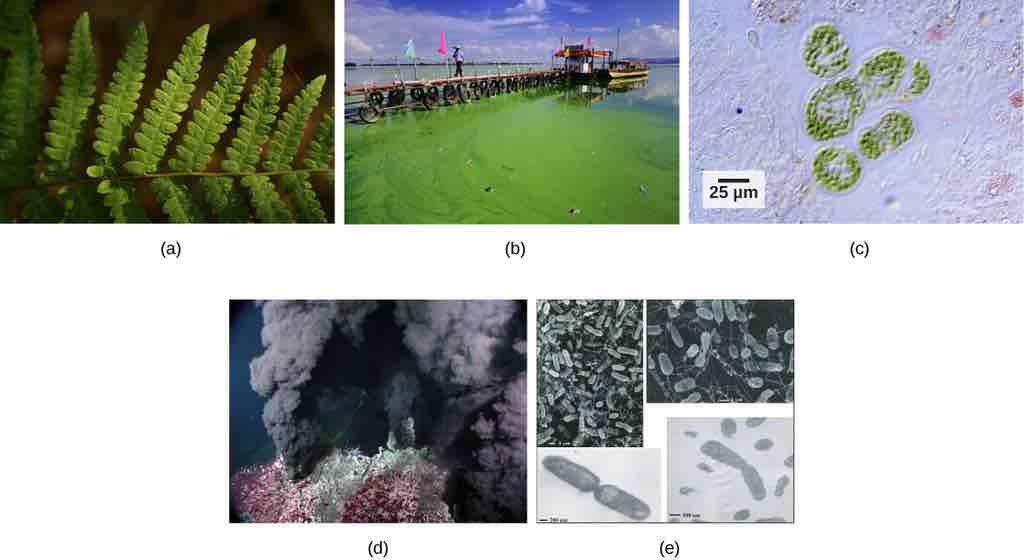Concept
Version 11
Created by Boundless
The Purpose and Process of Photosynthesis

Photosynthetic and Chemosynthetic Organisms
Photoautotrophs, including (a) plants, (b) algae, and (c) cyanobacteria, synthesize their organic compounds via photosynthesis using sunlight as an energy source. Cyanobacteria and planktonic algae can grow over enormous areas in water, at times completely covering the surface. In a (d) deep sea vent, chemoautotrophs, such as these (e) thermophilic bacteria, capture energy from inorganic compounds to produce organic compounds. The ecosystem surrounding the vents has a diverse array of animals, such as tubeworms, crustaceans, and octopi that derive energy from the bacteria.
Source
Boundless vets and curates high-quality, openly licensed content from around the Internet. This particular resource used the following sources:
"OpenStax College, Biology. October 27, 2013."
http://cnx.org/content/m44447/latest/?collection=col11448/latest
OpenStax CNX
CC BY 3.0.